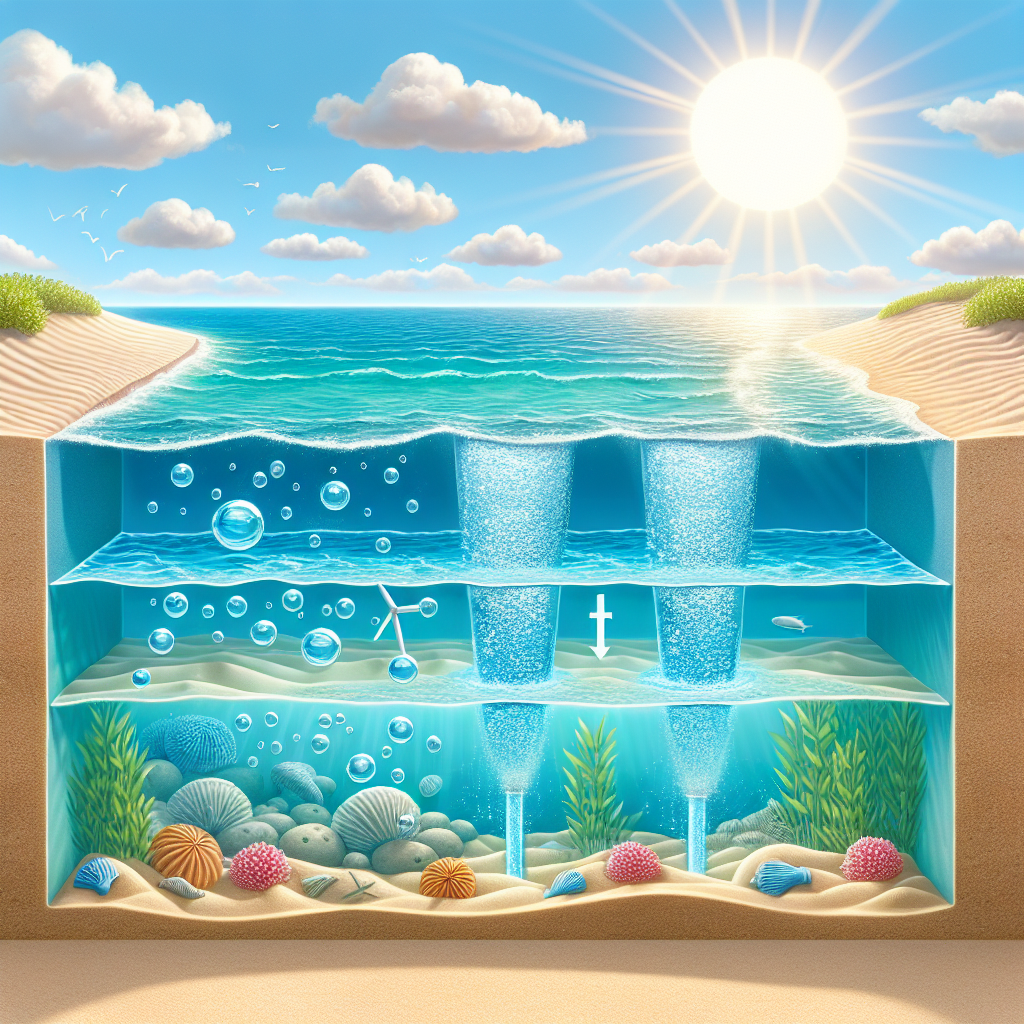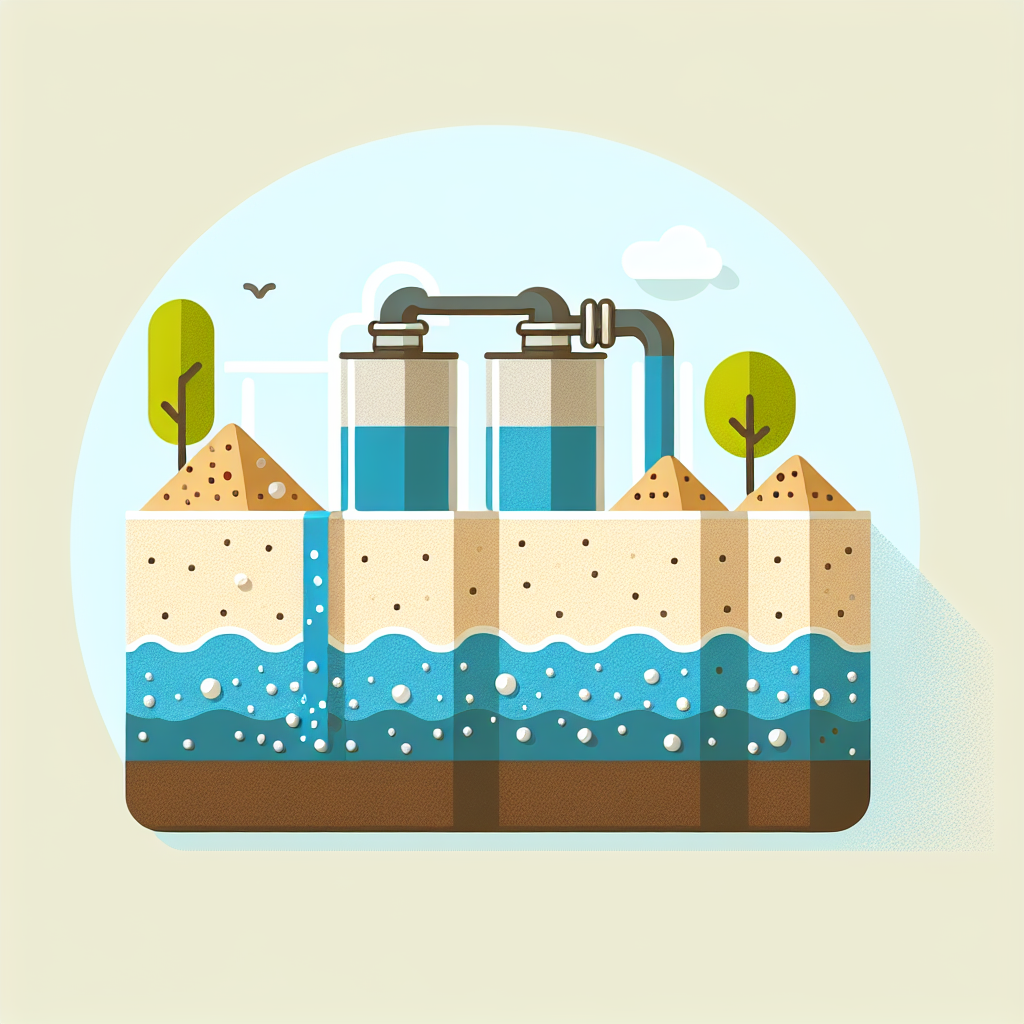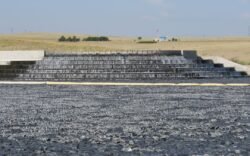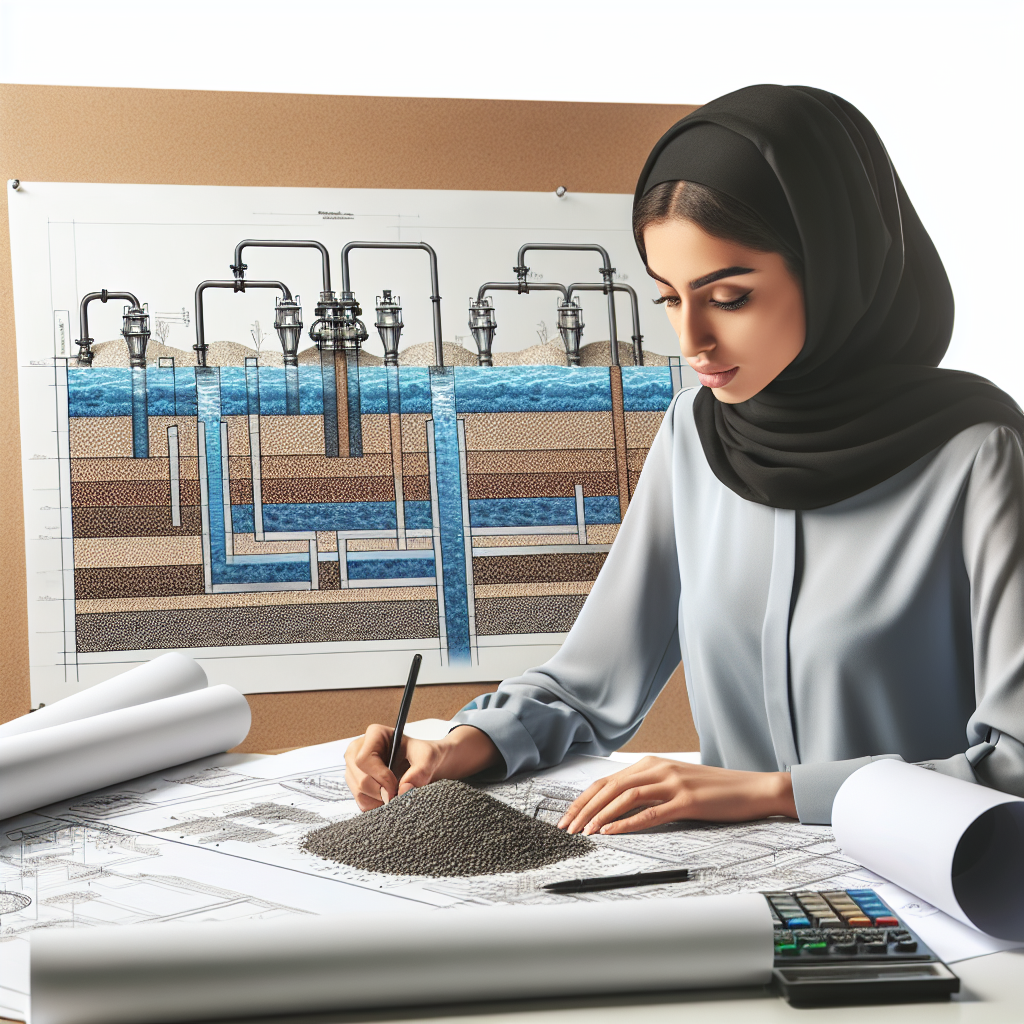Sand Filtration Systems: Nature\’s Way of Purifying Water

Sand Filtration Systems: Nature’s Way of Purifying Water
Introduction
Welcome to the world of sand filtration, where nature meets engineering in a dance of purification! If you’ve ever wondered how we transform murky water into crystal-clear goodness, you’re in for a treat. Sand filtration systems are the unsung heroes of the water treatment process, quietly working behind the scenes to ensure that our drinking water is safe and clean.
Picture this: a system so simple yet effective that it has been used for centuries. From ancient aqueducts to modern municipal water treatment systems, sand filters have stood the test of time. With their ability to remove impurities from water using nothing more than layers of gravel and sand, they embody the essence of sustainable water management practices.
But don’t let their simplicity fool you! These filtration systems come in various designs think slow sand filtration, rapid sand filtration, and even pressure sand filters each tailored for specific needs. Whether you’re an engineer planning a new wastewater treatment plant or just curious about how your local pool stays sparkling clean with pool sand filters, understanding sand filter design is crucial.
Did you know? The average lifespan of a sand filter can range from 5-10 years depending on usage and maintenance. This longevity makes them a reliable choice for both residential and industrial applications.
In this blog post, we’ll dive deep into the various types of sand filtration systems, explore their design considerations, and uncover best practices for maintenance. So grab your goggles (just kidding!) and let’s plunge into the fascinating world of sand filtration!
Understanding Sand Filtration
When it comes to sand filtration, think of it as nature’s own water purification superhero, swooping in to save the day by removing impurities from water. But what exactly is this magical process? Let’s dive in!
Definition of Sand Filtration
In simple terms, sand filtration is a mechanical and biological filtration method where water flows through layers of sand and gravel to remove suspended solids and pathogens. This natural filtration method has been utilized for centuries, proving its worth time and again.
History and Evolution of Sand Filtration Systems
The journey of sand filtration began long ago think ancient civilizations using sand to filter their drinking water. Fast forward to today, and we have sophisticated systems like rapid sand filtration and slow sand filtration, each with unique designs tailored for different applications. It’s like watching your childhood Lego creations evolve into a full-blown theme park!
Importance in Water Purification
Why should we care about sand filtration? Well, it plays a pivotal role in the overall water treatment process. By enhancing effluent quality, these systems help ensure that our drinking water is safe and clean. Whether it’s in municipal water treatment systems or wastewater treatment plants, sand filters are the unsung heroes working tirelessly behind the scenes.
Key Takeaway: Sand filtration is not just an old-school technique; it’s a vital part of modern water purification strategies that contributes significantly to sustainable water management practices.
So next time you take a sip of that refreshing glass of water, remember the journey it took through those layers of granules it’s more than just H2O; it’s a testament to engineering brilliance!
Types of Sand Filtration Systems
When it comes to sand filtration, not all systems are created equal. Each type has its unique quirks and applications, making them suited for different water purification needs. Let’s dive into the main types of sand filtration systems that are making waves in the world of clean water solutions!
-
Slow Sand Filtration
This classic method is like the tortoise in the famous fable slow and steady wins the race! Slow sand filters work by allowing water to trickle through a bed of sand, where biological processes break down impurities. Perfect for drinking water filtration and eco-friendly water purification methods, these systems typically require less energy and maintenance.
-
Rapid Sand Filtration
If slow sand filtration is the tortoise, then rapid sand filtration is definitely the hare! This system operates at a much faster pace, using larger grains of sand and higher flow rates to remove impurities from water quickly. It’s commonly used in municipal water treatment systems where efficiency is key.
-
Pressure Sand Filters
These filters take things up a notch by utilizing pressure to push water through a bed of sand. They’re ideal for industrial water filters or wastewater treatment plants where space is limited and high flow rates are essential. Just think of them as the espresso machine of filtration quick and effective!
-
Multimedia Filtration Systems
Imagine a layered cake, but instead of frosting and sponge, you have various media like sand, gravel, and even activated carbon! Multimedia filters combine different materials to enhance sediment removal techniques and improve effluent quality. This method is great for removing a wide range of contaminants.
-
Bio-Sand Filters
These eco-warriors use natural biological processes to purify water. A bio-sand filter combines traditional slow sand filtration with biological filtration methods that promote beneficial microorganisms. It’s particularly effective for home water filters or small-scale community projects aiming for sustainable water management practices.
Key Takeaway: Choosing the right type of sand filtration system depends on your specific needs whether it’s speed, efficiency, or sustainability. Understanding these options can help you make informed decisions in your next project!
Design Considerations for Sand Filters
When it comes to sand filtration, the design is where the magic happens. Whether you’re designing a system for a municipal water treatment plant or a home water filter, understanding the key considerations can make all the difference in water purification efficiency and effectiveness.
Sand Filter Design Principles
The foundation of any successful sand filter lies in its design principles. These include:
- Flow Rate: Determine the optimal flow rate for your specific application. Too fast, and you risk bypassing filtration; too slow, and you might not meet demand.
- Filter Media Depth: The depth of your sand layer can significantly impact performance. More depth typically means better filtration but can also require more maintenance.
- Surface Area: A larger surface area enhances the filter’s ability to capture impurities. Think of it as giving your sand filter a bigger net to catch those pesky particles!
Granular Media Selection: Silica vs. Anthracite Coal
The choice between silica sand and anthracite coal can feel like choosing between Batman and Superman both are heroes in their own right! Here’s how they stack up:
| Media Type | Pros | Cons |
|---|---|---|
| Silica Sand |
|
|
| Antracite Coal |
|
|
Layering: Gravel and Sand Layers for Optimal Performance
You can’t just throw some sand in a tank and call it a day! Layering is crucial for optimal performance. A typical setup includes:
- A bottom layer of gravel to support drainage and prevent clogging.
- A middle layer of coarse sand for initial filtration.
- A top layer of finer sand to capture smaller particles effectively.
Engineered Filter Beds for Treatment Plants
If you want to take your design to the next level, consider engineered filter beds. These are tailored specifically for high-rate filtration systems, allowing them to handle large volumes while maintaining high effluent quality. It’s like upgrading from a bicycle to a sports car faster, smoother, and way more efficient!
This is just scratching the surface (pun intended) on what goes into designing effective sand filters. With these considerations in mind, you’re well on your way to creating robust systems that will stand the test of time all while keeping our water clean!
If you’re ready to dive deeper into the world of sand filtration or need help with specific projects, don’t hesitate to reach out! Let’s make sure every drop counts.
The Water Treatment Process Involving Sand Filtration
When it comes to the water treatment process, sand filtration is like the unsung hero of the purification world. It quietly works behind the scenes, ensuring that our drinking water is as clean as a whistle. But how does it really work? Let’s dive into the nitty-gritty!
The Role of Sand Filters in Municipal Water Treatment Systems
Municipal water treatment systems rely heavily on sand filtration to tackle various contaminants. Think of sand filters as the bouncers at an exclusive club they only let in the good stuff while keeping out the unwanted guests, like dirt and debris. Here’s a quick breakdown:
- Pre-treatment: Before water even hits the sand filter, it’s usually pre-treated to remove larger particles.
- Filtration: As water flows through layers of sand, it traps smaller impurities, effectively purifying the water.
- Effluent Quality: The result? High-quality effluent that meets or exceeds safety standards for drinking water.
Turbidity Reduction Techniques Using Sand Filters
Turbidity is like that annoying fog on your glasses it clouds your vision and makes everything harder to see. In water treatment, high turbidity levels can indicate contamination. Enter sand filters! These systems utilize various techniques to reduce turbidity:
- Layering: Using different sizes of sand and gravel helps capture a range of particle sizes.
- Saturation: The longer water sits in contact with the sand, the more particles are removed.
- Backwashing: This process involves reversing flow to flush out trapped particles think of it as spring cleaning for your filter!
Sediment Removal Techniques in Wastewater Treatment Plants
Sediment removal is crucial in wastewater treatment plants where clarity and cleanliness are paramount. Here’s how sand filtration enters the picture:
- Mechanical Filtration: Sand acts as a mechanical barrier, catching sediments and larger solids.
- Biosand Filters: These innovative solutions enhance biological activity on top of the sand layer, improving sediment removal through natural processes.
- Sustainable Practices: Utilizing eco-friendly materials like silica and anthracite coal can further improve filtration efficiency while supporting sustainable water management practices.
Takeaway: Understanding these processes not only enhances our appreciation for clean water solutions but also highlights how essential proper design and maintenance are for effective sand filtration systems!
Maintenance and Operation of Sand Filtration Systems
Keeping your sand filtration system in tip-top shape is like maintaining a classic car: neglect it, and you might find yourself stuck on the side of the road (or in this case, without clean water). Regular maintenance ensures that your sand filtration system operates efficiently, providing optimal water purification for municipal or industrial needs.
Sand Filter Maintenance Best Practices
To keep your sand filter performing like a well-oiled machine, consider these best practices:
- Regular Inspections: Check for any signs of wear and tear or clogging. Look out for changes in effluent quality; if it starts to look like mud rather than clear water, it’s time to act!
- Media Replacement: Over time, the granular media can become less effective. Depending on usage, be prepared to replace the sand or gravel layers every few years.
- Monitoring Flow Rates: Keep an eye on flow rates. A significant drop might indicate that your filter is clogged or that maintenance is due.
- Chemical Cleaning: Occasionally use chemical cleaning agents suitable for sand filters to remove biofilm or other stubborn deposits without damaging the media.
The Backwashing Process Explained
If you’re not familiar with the backwashing process, it’s like giving your sand filter a refreshing spa day. This method helps remove accumulated impurities from the filter bed and is essential for maintaining performance.
- Initiate Backwashing: Switch the valve to backwash mode. This reverses the flow of water through the filter.
- Water Flow Direction: Water will flow upwards through the sand layer, dislodging trapped particles and dirt.
- Turbidity Reduction: The backwashed water should be clear by the end of this process; if not, repeat as necessary.
- Return to Service Mode: After backwashing, return your filter to normal operation mode and monitor performance closely for any irregularities.
Did You Know? Regular backwashing can extend the lifespan of your sand filtration systems significantly while ensuring high-quality effluent output!
A common misconception is that once installed, these systems require little attention. However, proactive maintenance is crucial! By adhering to these practices and understanding essential processes like backwashing, you can ensure that your sand filtration system remains an effective player in your overall water treatment process.
Your next steps? Schedule regular maintenance checks and educate your team about proper operation techniques. After all, when it comes to clean water solutions, prevention is always better than a cure!
Sustainable Practices and Innovations in Sand Filtration Technologies
As we dive deeper into the world of sand filtration, it’s essential to acknowledge the innovative strides being made towards sustainability. With water scarcity becoming a pressing global issue, these eco-friendly solutions are not just nice-to-haves; they are must-haves!
-
Eco-Friendly Water Purification Methods Using Sand Filters
Imagine a world where we can purify water using nature’s own materials! Sand filters are leading the charge in sustainable water purification. They utilize natural filtration methods that effectively remove impurities from water without the need for harsh chemicals. This means cleaner water and a healthier planet.
-
Aquifer Recharge Systems Utilizing Sand Filtration
Aquifer recharge systems are like giving Mother Nature a helping hand. By employing sand filtration, these systems allow stormwater to filter through layers of gravel and sand, replenishing groundwater supplies naturally. It’s like setting up a massive sponge to soak up all that precious rainwater!
-
High-Rate Filtration Systems and Their Benefits
If you thought sand filters were slowpokes, think again! High-rate filtration systems are revolutionizing the game by allowing for faster processing without compromising on effluent quality. These systems use advanced sand filter design to enhance flow rates while maintaining excellent removal of turbidity and other contaminants.
Key Takeaway: Sustainable practices in sand filtration not only enhance water quality but also promote responsible water management. By integrating these innovations, municipalities can improve their drinking water filtration processes while being kind to our planet.
- <
li>Eco-Friendly Water Purification Methods Using Sand Filters
li>< li>Aquifer Recharge Systems Utilizing Sand Filtration
li>< li >High-Rate Filtration Systems and Their Benefits
li >
ul >
section >
section >






